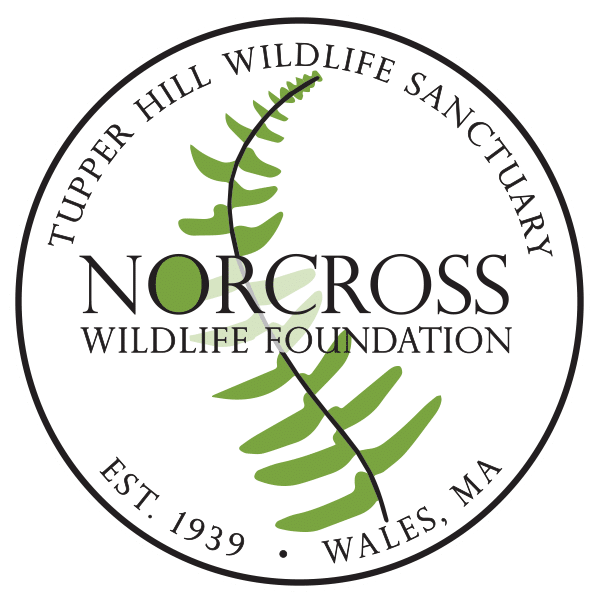Habitat Management of Our Public Trails
Changes in Management
As we learn more about the most effective ways to build and enhance wildlife habitat, our practices change to reflect the new information. Historically, the public trails at Norcross took visitors through a variety of well-tended wildlife gardens. Gardens that were regularly tended and kept neat to look their best. We now know that neat and tidy does not make for the best wildlife habitat and our new management of these areas now aim to best serve the needs of wildlife over aesthetics. So if our “gardens” look more messy and “wild”, please know that this is an intentional effort to improve our landscape for native wildlife.
What you can expect to see
There are several typical garden practices that may make for good gardening but don’t necessarily make for the best wildlife habitat. The use of bark-based mulches, garden cutbacks, tidying up dead wood, weeding out native species and lawns are all practices that we have used in the past to create certain spaces but will be phasing out moving forwards. Some ways we are improving wildlife habitats and changing practices include:
Cutting back herbaceous plants in fall is a common garden practice often done out of habit but doing so removes much-needed overwintering habitat from the landscape. Roughly 1/3 of our native bees spend the winter above ground nesting in the stems of overwintering plants. We will be leaving our gardens uncut during the winter (the stems will eventually degrade and make for good plant food anyways) and shifting most of our meadow mowing to a spring schedule (after the bees have left their stems).
The use of bark-based mulches, (especially dyed ones) is a purely aesthetic choice and does not aid in building healthy soils and habitats. What few benefits mulching with bark offers can be better accomplished with live plants (i.e., living mulches) or with the use of better materials such as woodchips or compost, both of which break down quickly allowing nutrients to enter the soil food web and plants to grow.
Coarse woody debris is a fancy way of labeling downed trees and branches. The reason we have a fancy term for such material is that it is valuable habitat for a variety of different species from beneficial bacteria and fungi (decomposers) to native insects, to ruffed grouse who often use logs as drums as part of their mating rituals. What this means for us, and our visitors, is that you can expect to see debris along our trails. As trees and branches fall, we will be vigilant in cleaning up any materials that pose a safety hazard to our visitors or block our trails, but materials along the trailside will be left in place.
Weeds. What is a weed? It’s a plant out of place and the place defines the weed. You may label the violets in your lawn as weeds but on our landscape those same “weeds” are host plants for numerous native species such as the great spangled fritillary, (Speyeria cybele). What this means is that if a plant helps to build habitat, then we don’t plan on removing it. Weeding, for us, will focus on species that damage habitat, namely invasive species such as burning bush (Euonymus alatus), Japanese barberry (Berberis thunbergii), and Asian bittersweet (Celastrus orbiculatus).
Lawns. Let’s face it, the traditional lawn is an outdated idea that is responsible for massive amounts of habitat destruction in America. While we may create our own version of a lawn with select native plants for some areas, those lawns will look very different from a monoculture of non-native grasses. Much of our lawn space will be converted to meadows, forests, or native alternatives such as wild strawberry (Fragaria virginiana), or American heal-all (Prunella vulgaris ssp. laceolata)
